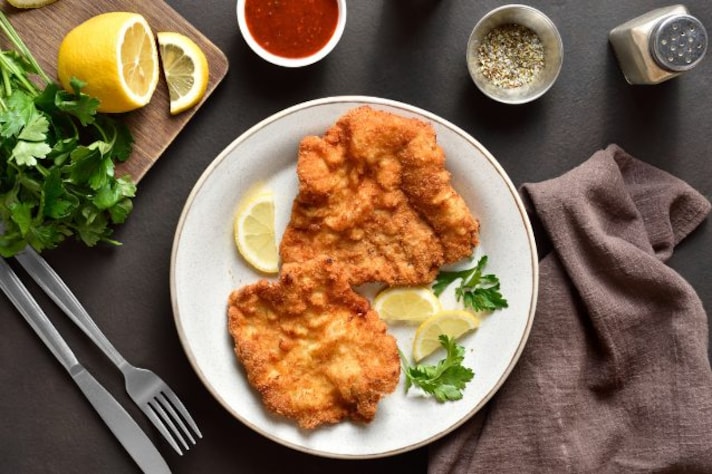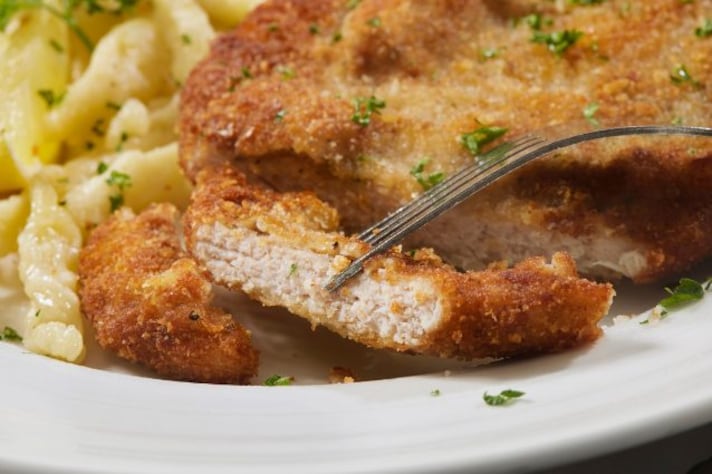
Everyone loves fried food. There’s something undeniably satisfying about biting into a crispy, golden crust, especially when it’s wrapped around juicy meat. Fried chicken, in particular, is beloved worldwide, with each country putting its own spin on this classic comfort food—from the US’s southern fried chicken to Japan’s karaage. But when it comes to Germany, the schnitzel reigns supreme. This famous breaded and fried meat dish is so popular it has sprouted several variations, with the Wiener schnitzel being the most iconic. But what sets the Wiener schnitzel apart from its schnitzel sibling? Let’s find out!
What Makes a Schnitzel a Schnitzel?
At its core, a schnitzel is simply a thin slice of meat that has been breaded and fried. The term "schnitzel" comes from the German word for "slice," which is fitting, as the meat—whether it’s chicken, pork, or veal—is typically pounded thin before being coated in flour, egg, and breadcrumbs, then fried to a perfect golden crisp. What classifies a schnitzel isn’t necessarily the type of meat used but the method of preparation. The meat must be tenderized, coated, and fried. Whether it’s a pork schnitzel, known as Schweineschnitzel, or chicken schnitzel, the dish follows this basic formula, making it a versatile and much-loved dish in German cuisine and beyond.

What Makes a Wiener Schnitzel Unique?
Now, let’s talk about the Wiener schnitzel, Austria’s national dish and the more glamorous cousin of the classic schnitzel. The term "Wiener" means "Viennese," as the dish hails from Vienna, but its name also sets strict rules. A true Wiener schnitzel must be made from veal, and only veal. Unlike a regular schnitzel, where chicken or pork may be used, if it’s not veal, it’s not considered authentic Wiener schnitzel. The preparation is similar—thinly pounded, breaded, and fried—but tradition calls for clarified butter as the frying medium, adding a distinctive richness to the dish. The result is a crisp, buttery, and tender delight that embodies Austria’s culinary elegance.
Wiener Vs. Schnitzel: Taste and Calories
When it comes to taste, the difference between schnitzel and Wiener schnitzel is subtle but important. The type of meat plays a huge role in the flavor profile. A pork schnitzel has a slightly stronger, heartier taste compared to the more delicate flavor of veal in Wiener schnitzel. Chicken schnitzel, on the other hand, is lighter and tends to soak up the flavors of the breadcrumbs and seasonings. The use of clarified butter in Wiener schnitzel adds a layer of richness that regular schnitzel—often fried in oil—may lack.
In terms of calories, Wiener schnitzel tends to be a bit richer, thanks to the veal and butter, making it a more indulgent dish. Pork and chicken schnitzels, especially when fried in oil, are slightly lighter, though not by much—fried food is fried food, after all! Both dishes are best enjoyed as occasional treats, considering their calorie-dense nature.

Wiener Vs. Schnitzel: Preparation
While the preparation of schnitzel and Wiener schnitzel is mostly the same, with both requiring the meat to be pounded thin and coated in flour, egg, and breadcrumbs, there are some differences worth noting. Wiener schnitzel is traditionally fried in clarified butter, which gives it that distinctive golden sheen and slightly nutty flavor. Regular schnitzel, however, can be fried in various oils depending on preference and availability, making it a bit more adaptable in home kitchens. Another key difference lies in the accompaniments. Wiener schnitzel is often served with a slice of lemon and a side of lingonberry sauce, which adds a refreshing, tangy contrast to the richness of the veal. Regular schnitzel, on the other hand, may come with a variety of sides, from potatoes to salads, depending on the region and the meat used.
;Resize,width=767;)
